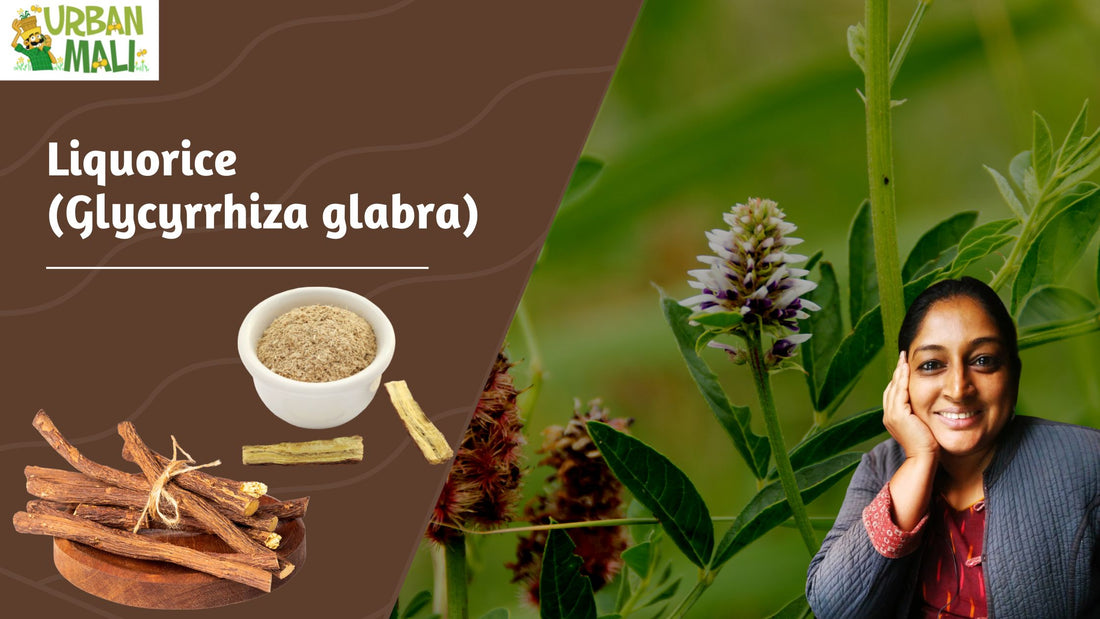Glycyrrhiza glabra belongs to the Leguminosae family. This plant is commonly called "licorice". Its botanical name is Glycyrrhiza glabra. It grows in temperate regions worldwide. This plant is commonly known as licorice, sweet flag, and liquorice. Its scientific name comes from Greek, meaning “sweet root”.
Licorice is an herb used for centuries. In ancient times, licorice was eaten to relieve coughing, colds and flu symptoms. Today it is still used to help people suffering from respiratory ailments such as asthma, bronchitis and pneumonia.
Licorice contains compounds called glycyrrhizin and flavonoids. These substances are believed to reduce inflammation and ease breathing. Licorice is also thought to stimulate digestion and improve the absorption of nutrients.

Licorice is used as food flavoring and medicine. There are many species of licorice plants.
The genus contains about 400 species worldwide, most of which are found in Asia, Europe, Africa, and North America. Many of these species are cultivated for use as ornamental garden plants. Some species are grown as ornamental and others are used medicinally.
Licorice is one of the oldest medicinal herbs. In ancient times it was used to treat coughs, sore throats, and fever. Today it is still used to treat coughs and colds, and to help relieve symptoms associated with asthma and allergies.
Licorice root is used in traditional Chinese medicine to treat myriad ailments including heart disease, high blood pressure, diabetes, and constipation. It is also used to treat depression and anxiety.
In addition to flavoring, it is also used in cooking because of its sweet aroma.
The use of licorice root dates back thousands of years. Ancient Chinese physicians used it to treat coughs, colds, and asthma. In the Middle Ages, licorice root was commonly prescribed for digestive problems such as constipation. During World War II, the Japanese army used licorice root to help prevent scurvy. Today, licorice root is still used to improve digestion and relieve sore throats.

Phytochemistry and bioactive compounds
Liquorice contains many different types of active ingredients. Some of these include Polyphenol compounds, Glycyrrhizic acid, Flavonoid compounds, Anthraquinones, Alkaloids, and Steroids.
Pharmacological properties
Liquorice root contains many biologically active compounds such as glycyrrhizinic acid, glycyrrhetinic acid, liquiritin, liquiritigenins, glycyrrhizin, isoliquiritin, isoliquiritigenin, licochalcone A, licocoumarone, etc. These compounds are responsible for many of the pharmacological properties of liquorice. Among them, glycyrrhizic acids are the most important ones.
Medicinal uses
- Licorice root extract may hold promise against obesity.
- Glycyrrhizin, a compound found in licorice root, may help prevent the spread of hepatitis C.
- It shows antioxidant, anti-inflammatory, and antibacterial properties.
- Some people use it as a skin moisturizer because it helps reduce dryness. Other uses include treating eczema, psoriasis, and dermatitis.
- Research suggests that licorice works to lower blood pressure and cholesterol levels, and help prevent cancer.
- In addition, some studies suggest that licorice might help reduce inflammation.
- It is widely used in the treatment of chronic hepatitis and cirrhosis.
Potential side effects and precautions
Licorice root is generally considered safe for human consumption. However, large doses may cause gastrointestinal upset, including nausea, vomiting, and diarrhea. Individuals with cardiovascular disease should discuss the use of licorice root with their physicians prior to consuming it.

Next step
Gardener services
Landscaping services
Online nursery
Organic pesticides and fertilizers
Extra reading
Dodda Davana (Artemisia nilagirica)
Manoranjitha (Artabotrys odoratissimus)
Nela bevu (Andrographis paniculata)
How to grow black pepper at home
Happy Gardening!
Dr. Vandana K.

